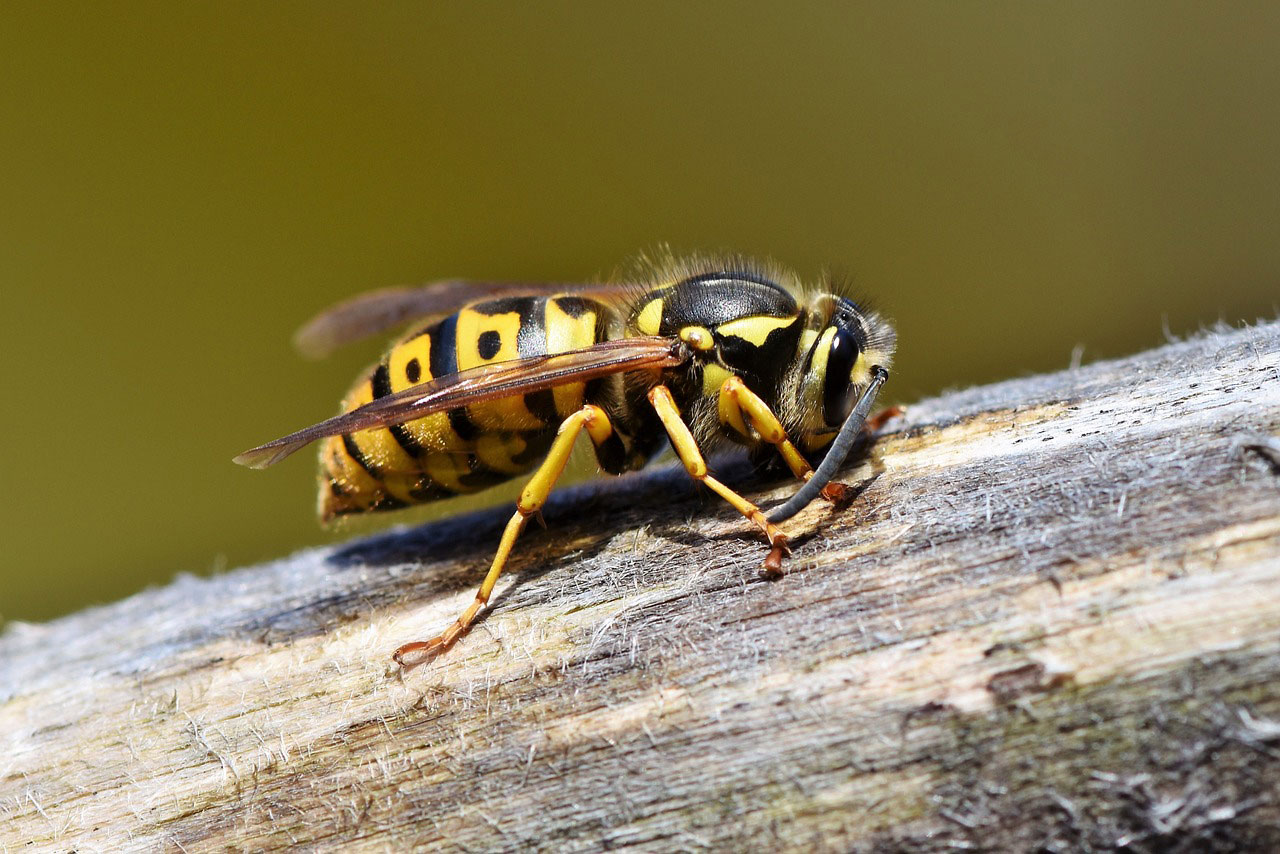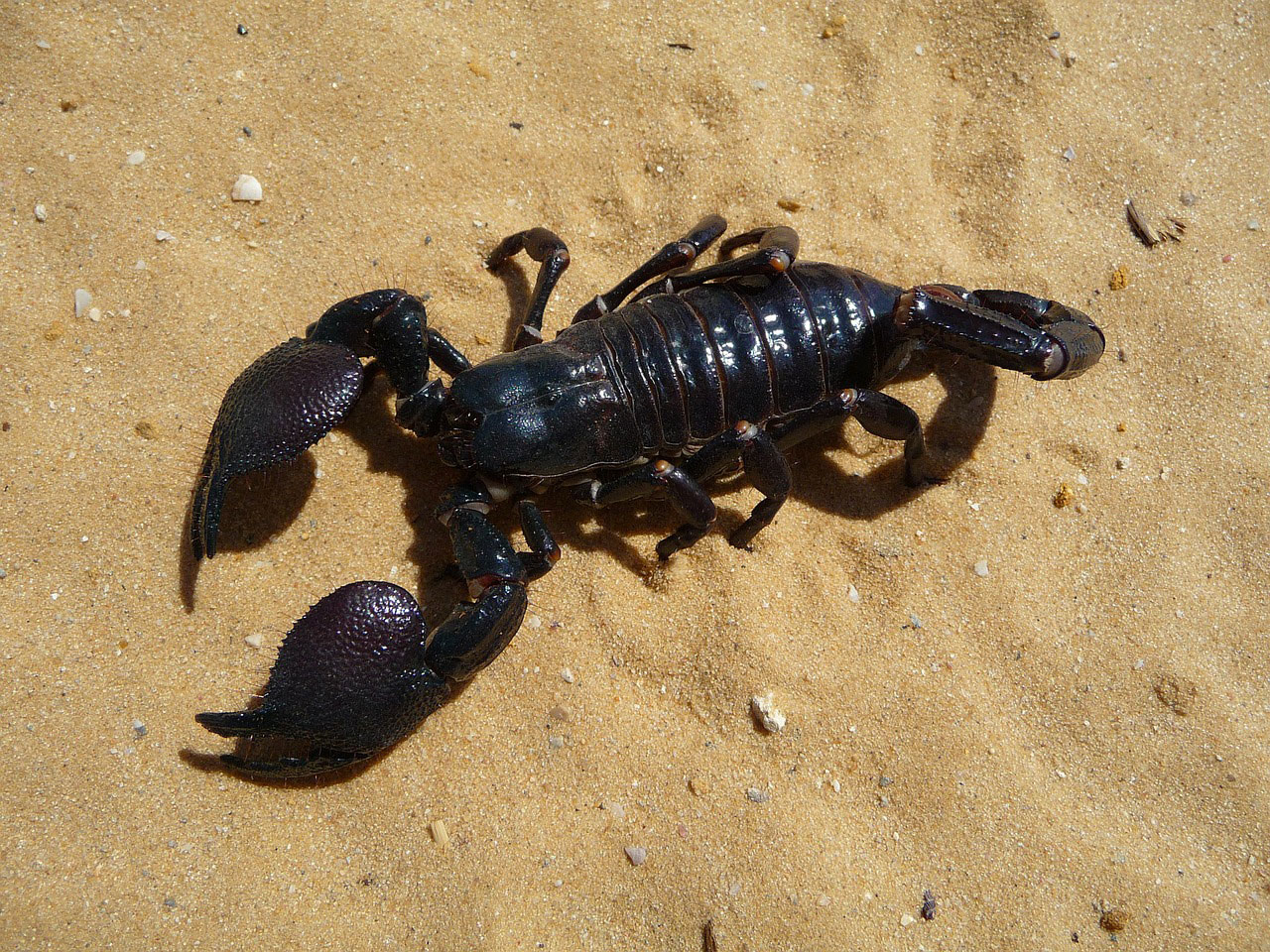
Stinging Creatures and Your Dog: What to Do If Your Dog Is Stung
Many dogs are natural-born hunters, often going off in search of flying and crawling creatures, many of which can sting, injecting a toxin into your pooch, including bees, spiders, scorpions, and jellyfish! Once stung, your pooch can experience an allergic or inflammatory reaction along with intense pain. Most often, stings occur on a dog’s face, but sometimes pets are stung inside the mouth, or they sit or step on a stinging creature.
What you do when your dog encounters a stinging creature can lessen pain and shorten recovery time for your best friend. Stay current on your pet first-aid skills, and be sure your Pet First-Aid Kit is well stocked, that items are not expired, and that you know how to dose and properly administer all items. However, prevention is key when it comes to these forms of injected poisoning, so do your doggone best to teach your dog not to go after stinging creatures.
An Emergency Situation
Some dogs, like some people, are highly sensitive to toxins and can go into anaphylactic shock, a severe allergic reaction that can cause your dog’s circulatory system to shut down. If you notice any of the following symptoms (usually occurring within one hour of the bite), seek immediate veterinary assistance:
- Severe swelling (i.e., the entire face as opposed to just the lip)
- Difficulty breathing possibly due to swelling of the tongue or throat.
- Vomiting and diarrhea
- Pale or blue-tinged gums
- Rapid and/or irregular pulse
- Below normal body temperature (less than 100º F)
If you have an EpiPen prescribed specifically for your pet, read the attached instructions, inject one dose, and get to your Veterinarian as when the epinephrine wears off, anaphylaxis can occur.
INSECTS (Bees and Wasps)
Preventive Measures
- Try to redirect your dog’s prey drive through training.
- Limit the insect population in your yard. Do not leave food outside (human or pet), use pet-safe insecticides, and grow plants (such as lemongrass or catnip) that cause insects to stay away.
If the Worst Happens
- Flick away the stinger with a credit card, Popsicle stick, or even your fingernail. By pulling with tweezers, you are likely to puncture the poison sac, allowing the toxin to enter your dog’s body. Often though, there is no stinger to be found, as it is concealed in the dog's fur, or has already been pawed away.
- Although generally safe, always check with your veterinarian, especially if your pet has any known medical conditions. Administer 1 mg diphenhydramine (Benadryl antihistamine) for every pound your dog weighs (ex: 60 lbs. dog needs 60 mg). The antihistamine will make your pup drowsy and prevent him from scratching further. Read labels to make sure your diphenhydramine does not also contain cetirizine, acetaminophen, or pseudoephedrine. Gel caps are easy to administer by piercing with a straight pin and squirting under your dog’s tongue. The abundance of blood vessels in the mouth allows the medicine to be absorbed more quickly into the bloodstream sublingually than if swallowed and processed by the stomach.
- Apply a cold pack to any swelling, but remove it every few minutes to avoid frostbite. You can also squeeze out a wet washcloth until it’s just damp and place it between the cold pack and your dog to dissipate coldness and prevent frostbite. Note: for wasp stings, applying regular white vinegar may take out the sting.
- If swelling persists beyond 4–6 hours, seek veterinary care.
If the Sting Occurs Inside the Mouth
- Offer your dog something cold to minimize swelling, such as an ice cube, frozen slice of banana, or ice water.
- Seek immediate advice from your veterinary professional as toxins in the mucous membranes of the mouth and under the tongue more quickly absorb into the pet’s blood stream, and should your dog’s tongue swell, a veterinarian is best equipped to help.
- Ask your veterinarian if you should administer diphenhydramine on the way to veterinary care.

SPIDERS
Most spider bites cause little more than painful swelling and should be treated like insect stings since most spiders are unable to penetrate human or animal skin. However, there are a few species in the United States, and more throughout the world, that have venomous baring fangs. In addition to pain, dogs can experience serious side effects within 30 minutes to several hours of being stung.
In the U.S., the most dangerous spiders include: black and brown widow (5 species), brown recluse, and hobo spiders. Around the world, your dog may encounter Brazilian wandering, six-eyed sand, Sidney funnel web, redback, mouse, and yellow sac spiders. If your dog is bitten by one of these venomous arachnids, get immediate veterinary help!
Preventive Measures
- Use pet-safe insecticides to keep your house and yard spider-free.
- Clear debris piles and leaves from locations your pets frequent.
- Prevent dogs from sniffing under and around sheds, foundations, basements and damp areas, including where hoses are stored, and near water spigots and leaky plumbing.
If the Worst Happens
If your dog is unlucky enough to get bitten by a spider, swelling and redness will occur at the sting site. Your dog’s nose, lips, eyelids, and ear flaps are most vulnerable since they are not covered by fur, but a bite can occur anywhere. You may notice your pooch licking or rubbing the area, and in severe cases, pain, fever, rash, chills, breathing difficulty, vomiting, diarrhea, lethargy, muscle tremors or rigidness, paralysis (including the lungs), and shock may present.
- Administer 1 mg diphenhydramine (specifics mentioned above).
- Spider toxin contains acid, so applying an alkaline may counteract the acidity. Dab sting location with a paste made of 1 tablespoon baking soda or meat tenderizer mixed with a drop of water. The tenderizer contains papain, an enzyme extracted from papayas, which breaks down the protein in the toxin.
- Apply a cold pack to any swelling, but remove every few minutes to avoid frostbite.
“If you suspect your dog has been bitten by a venomous spider, apply a cold pack, restrain his movement [as activity hastens the spread of venom], and get him quickly to your veterinarian,” says Liz Koskenmaki, DVM. If you can do so safely, bring the dead spider with you, unless you can accurately identify it, and tell your vet what kind of spider stung your dog.

SCORPIONS
There are more than 1,200 different species of scorpions in the world, and their venom varies, with most of them being potent enough to kill an insect or small animal, but some being deadly even to people and larger animals. From human experience, we know the pain from a scorpion sting can be intense. When stung, most pets recover without difficulty, yet some have a more severe reaction. Scorpions with large, thick tails and slender pinchers are generally most harmful.
Preventive Measures
- Don’t allow pets to roam in areas known to have venomous scorpions. Especially when temperatures climb above 100º F, scorpions like damp areas around wood piles, flower beds with wood chips, and plumbing fixtures.
- Deter scorpions from entering your home by repairing holes in window screens and adding weather stripping and caulk to any openings scorpions might enter.
- Prune trees and shrubbery near the house.
- Cedar oil may repel scorpions, but also investigate pet-safe insecticides.
If the Worst Happens
If your dog is stung by a scorpion, he may experience localized pain and/or numbness. Additionally, any or several of the following symptoms may be present:
- Drooling
- Tearing from the eyes
- Inappropriate urination and defecation
- Dilated pupils
- Muscle tremors
- Breathing difficulty
- Collapse
- Carefully remove the stinger from your canine patient if at all possible using tweezers.
- Get to immediate veterinary care where supportive treatment (fluids and pain medications) can be administered.

JELLYFISH
Jellyfish are amazing, yet simple marine animals characterized by their jelly-like bodies and stinging tentacles. Among the oldest creatures on earth, there are around 10,000 different species of jellyfish and they get their proper name, cnidarians, from the Greek word for sea nettle. When they come in contact with potential prey or threats—meaning you or your dog—their tentacles literally explode, causing great pain.
Preventive Measures
Avoid high-risk areas when visiting the beach with your dog by:
- Looking for diamond-shaped warning signs that depict a human and a jellyfish.
- Noticing purple flags, which denote dangerous marine life.
- Keeping your dog on a leash and away from the water’s edge during windy times. Jelly fish come near the shore when it is windy and show up in large numbers (known as blooms).
- Not touching or letting your pet anywhere near a jellyfish, even if it appears dead. Poisonous cells on dead jellyfish can still sting! They often look like plastic bags, bluish-purple bottles, or light bulbs. Keep a watchful eye and keep your dog out of harm’s way.
If the Worst Happens
- Put on rubber gloves or you will be stung too, and pour rubbing alcohol or white vinegar onto the tentacles. This stabilizes the nematocysts, preventing them from continuing to sting your pet.
- Next, take small sections of sticky tape (like for packing boxes) and gently press them against the tentacle, then pull the tape away to remove.
- Once you’ve done a good cleanup of the tentacles, flush the affected area with salt water or even beach sand. Fresh water will cause toxins to be released into your pet!
- Call your veterinarian and you may be advised to administer Benadryl (1 mg per pound of your pet’s body weight). Packing the site of the sting with a baking soda/water paste may soothe the pain, as can a cold compress.
- After 10–20 minutes, alternate every 5 minutes with a very warm (but not scalding) towel. Remove and let it cool to bring healing blood back to the area, flushing out the toxin. Then, reapply the cold compress followed by the warm towel for about 20 minutes or until veterinary care is reached.
Living things don’t have to be large to inflict great pain and distress on our canine best friends. Insects, spiders, scorpions, and jellyfish are among the stinging creatures your dog might encounter. Whenever you are exploring new territory, it is best to keep your dog on a leash to increase the chances of keeping him out of harm’s way. Many of these stinging creatures, however, may inhabit your yard or neighborhood, so it’s best to know which animals are indigenous to where you live and learn best practices to deter them and keep your dog safe. We must remember, though, that we can’t keep our dogs in a plastic bubble, so we must be prepared by knowing proper pet first-aid techniques and having the tools we need on-hand to prevent an encounter from becoming a nightmare!
Denise Fleck is the Pet Safety Crusader™ having personally taught 20,000 humans to rescue Rover or help Fluffy feel better. Her mission is to help YOU make a difference in the life of an animal through Pet First-Aid, Senior Pet Care and Disaster Preparedness classes and books. You can find her sharing her pet care expertise at www.crazyrichpets.com










